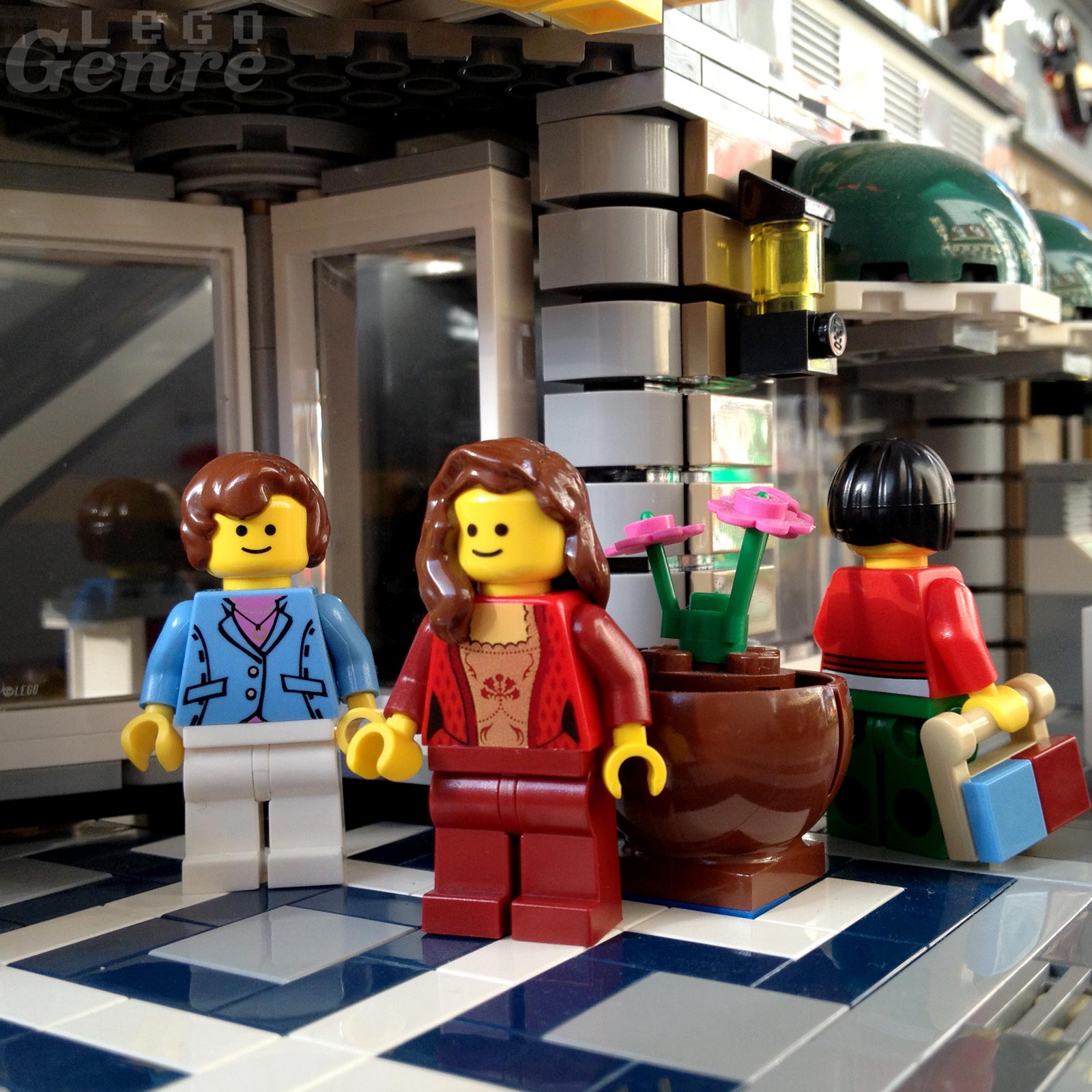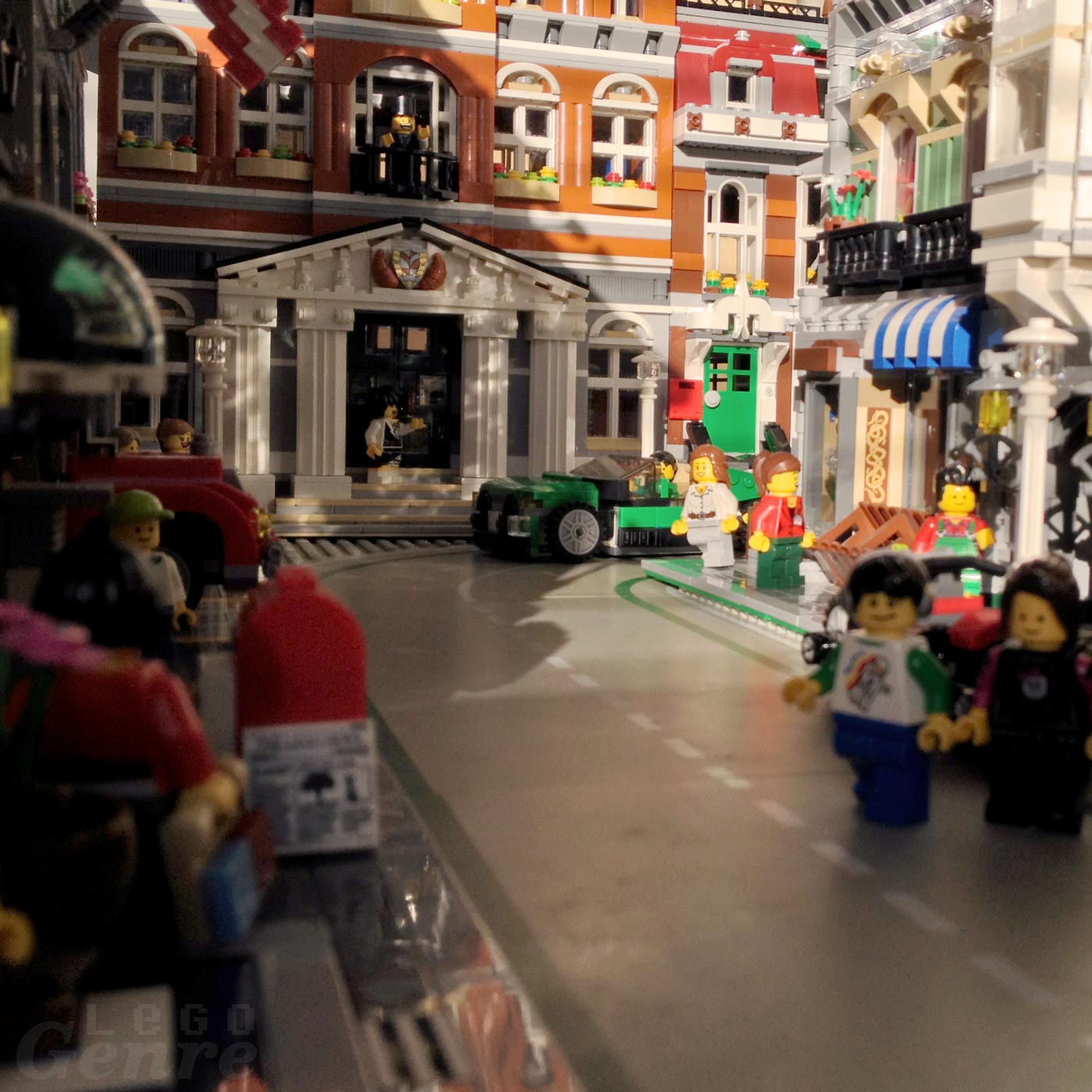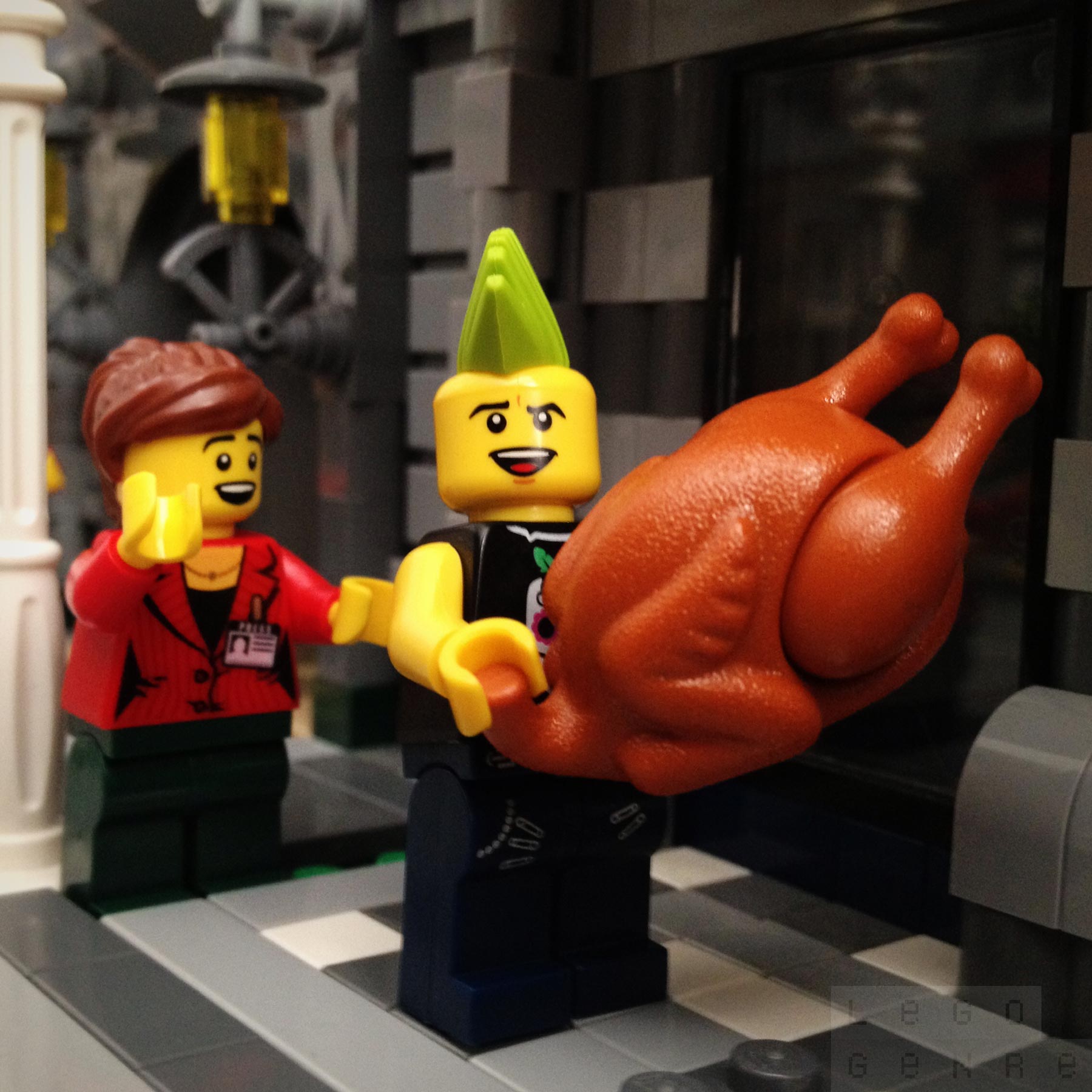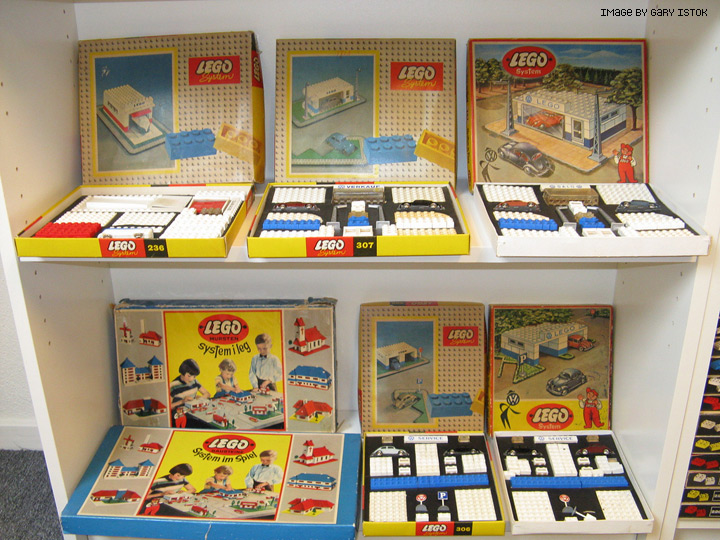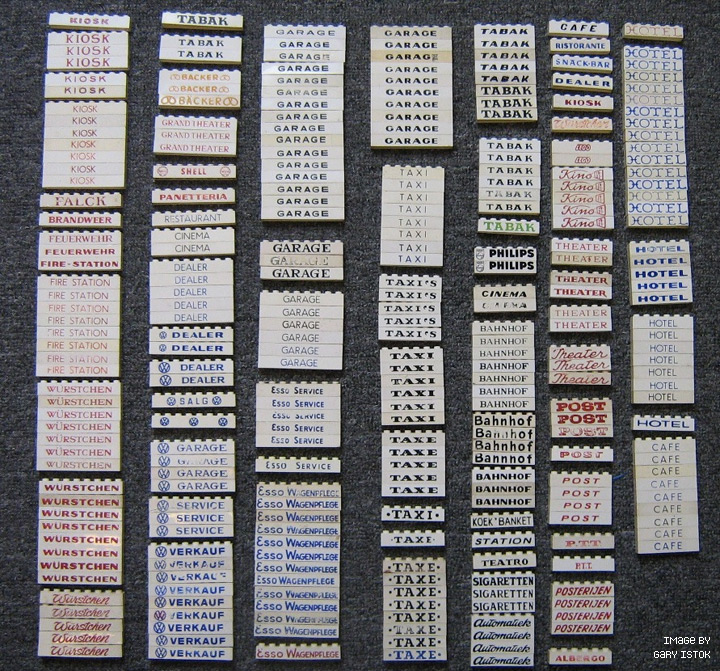Cruisin’ for a Bruisin’
Tag: Town
LegoGenre | 00329: Mean Street
LegoGenre | 00322: Overwhelmed
LegoGenre | 00321: Pop(sicle) Star
LegoGenre | 00320: Afternoon Sun
LegoGenre | 00308: Snack Time
Lego Printed & Named Beams & Bricks
Back before the Pirates, before the Minifig, even before Duplo, Lego introduced the Town System. With this new system came the first named beams and printed bricks. Usually produced on white 1×6 and 1×8 bricks. These printed bricks were so popular at the time that there were hundreds and hundreds of varieties available in different colors and typefaces.
The very first printed/named bricks hit the stores in 1955, just 6 years after Lego introduced their original sets. Since these bricks were there in the beginning, their availability matches the spread of Lego across Europe. First appearing in Danish, Norwegian and Swedish. Originally these bricks were available in a Named Beams set (Set No. 1224). As Lego started selling in new countries, they started translating these printed/named bricks in all the different languages. By 1962 Lego was offering printed/named bricks in Germany, Netherlands, Switzerland, Belgium, Austria, Portugal, Italy, France, Finland, Britain, Ireland, United States, Canada, and Australia. Most of these countries had bricks printed in their own native language, with one interesting exception. Lego never printed Portuguese bricks.
The bulk of these printed/named bricks were made in the 1950–1960’s. Since working with ABS (Acrylonitrile Butadiene Styrene) plastic was relatively new the printed/named bricks were often misprinted. The typefaces that Lego worked with were originally hand–lettered before being transferred to the molds. There is nothing directly comparable to this printing today, the closest results are found with Flexography (Flexo) printing, which is commonly found on plastic shopping bags.
A very wide variety of typeface styles can be found on these Lego bricks. Anywhere from Sans Serif, Serif, Slab Serif, Script, and Decorative styles were available. The imperfections of coming from hand–lettering greatly contributed to their personality. Some of this printing is interesting in that they exhibit reverse stress on the letters. This is especially noticeable with the “TAXE” and “TABAK” bricks.
As time moved on, so too did most of these unique typefaces. By the time the 1970’s came around Sans Serif typefaces were standard, and most of the charm of these named bricks started to fade. These printed/named bricks would completely die out before the 1980’s, being replaced with the much cheaper, and more versatile, sticker. Today Lego only prints a few bricks a year, and almost never text. Making this an interesting relic from the past.
One last thing; some of these bricks are a product of their time, especially the “TABAK” and “SIGARETTEN” bricks. You would never find a product marketed to children today with a tobacco reference.
Credit & More Information.
All of the above images were provided by Gary Istok. Who, can be found on the Eurobricks website as the Lego Historian. He has written extensively about printed/named bricks/beams here, and here. Also, for extremely detailed information about “Thousands of things you probably never knew about Lego sets, Lego parts, and Lego related items…” make sure check out Gary Istok’s “The Unofficial Lego Sets/Parts Collectors Guide (1949–1990’s)” which is available for DVD and Download. Seriously, his work is awesome.
LegoGenre | 00227
My Best Friend Is My Hat.
Crowbars & Crime.


